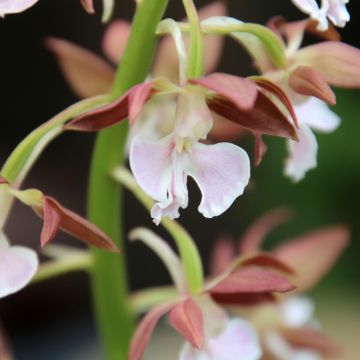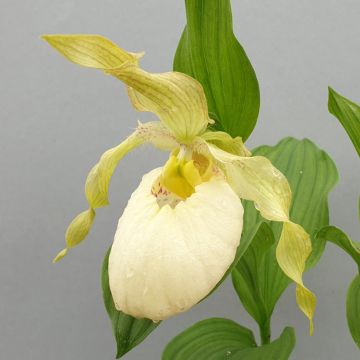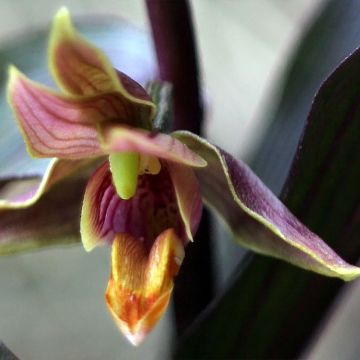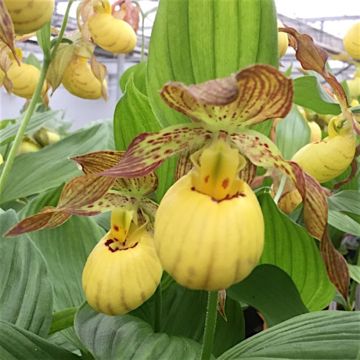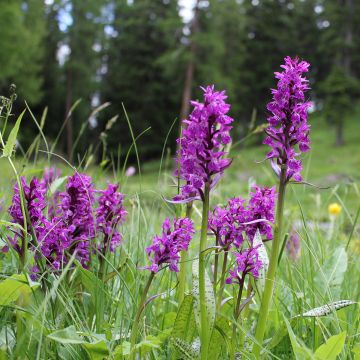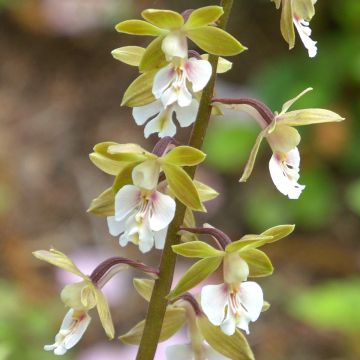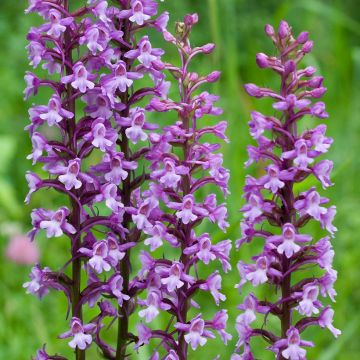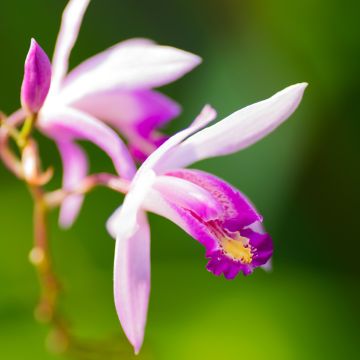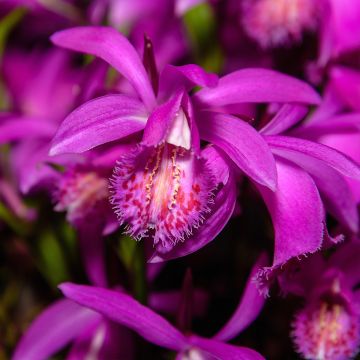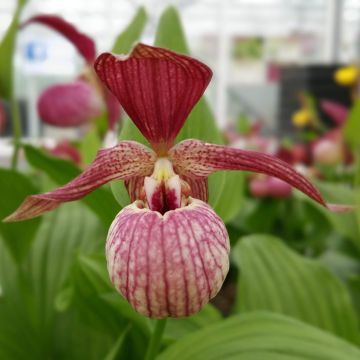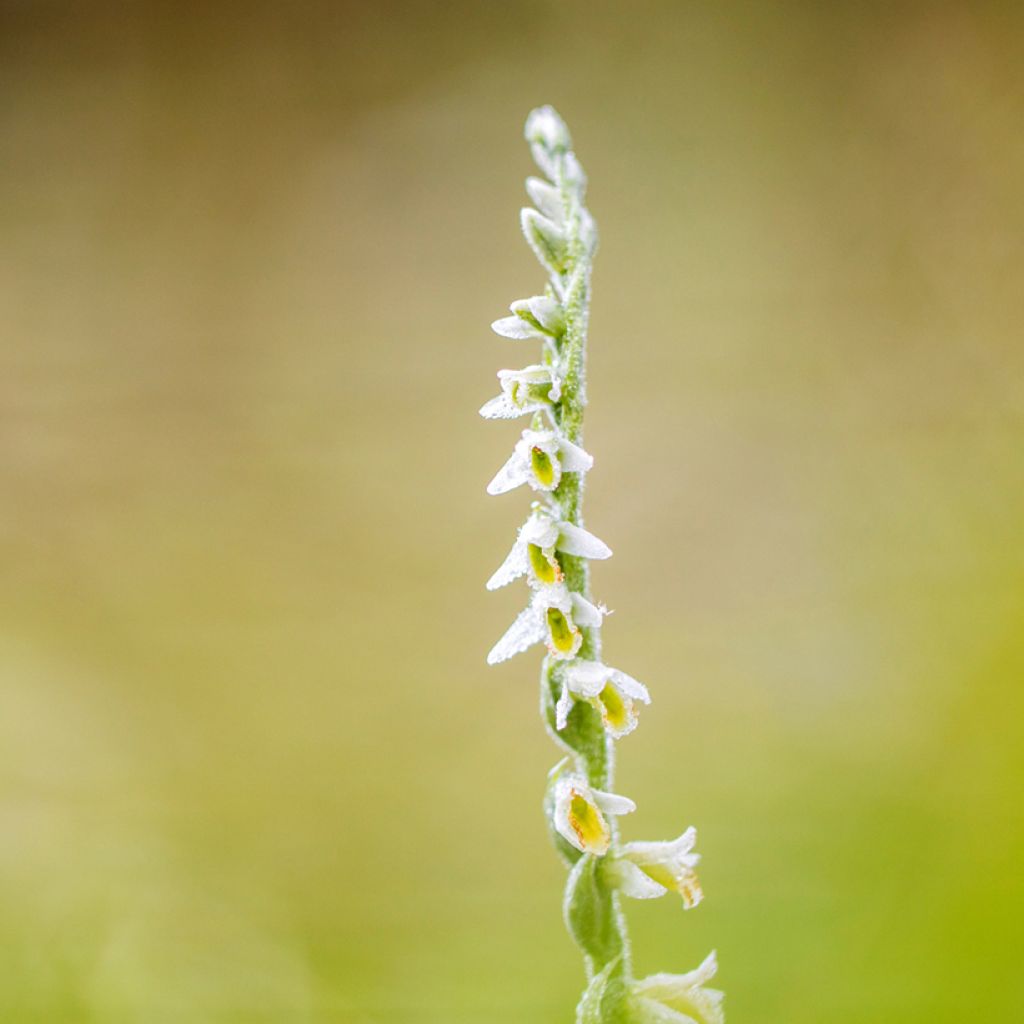

Spiranthes ochroleuca - Yellow Ladies' Tresses
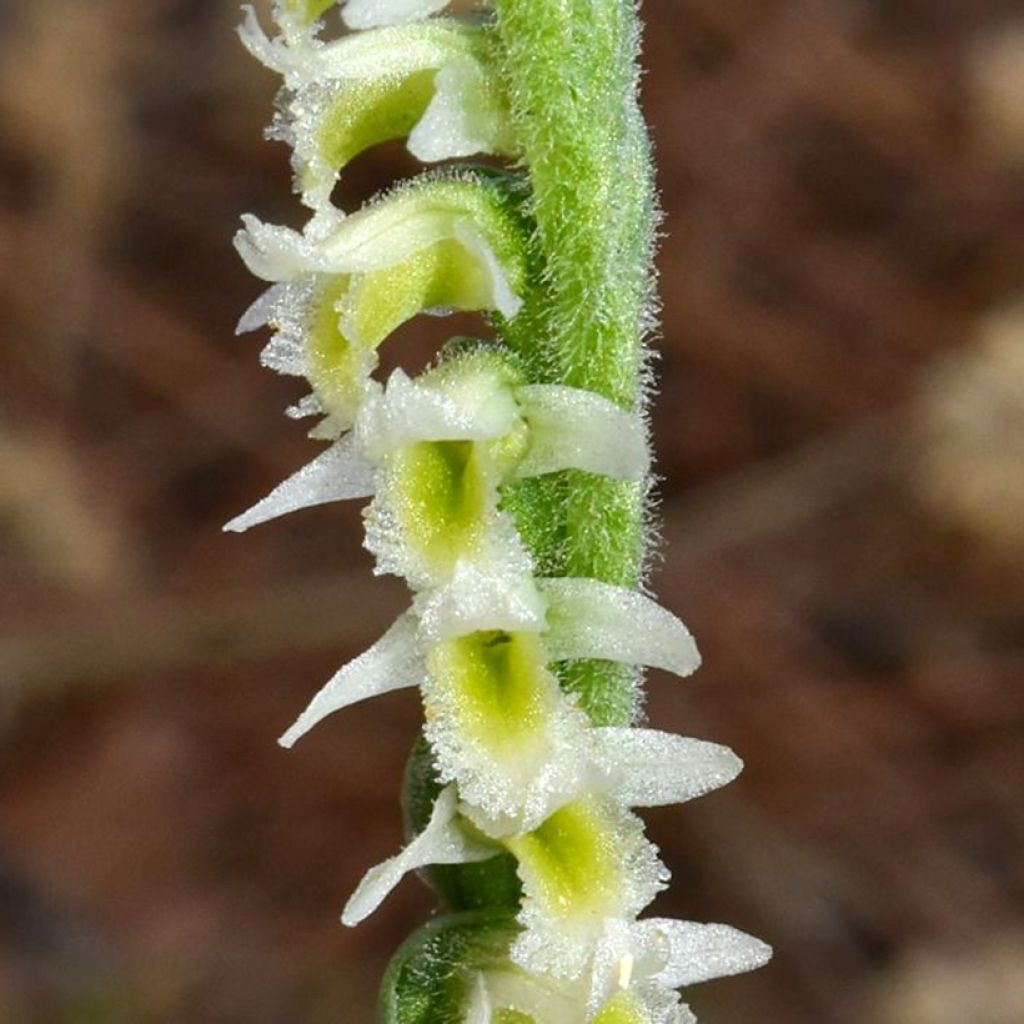

Spiranthes ochroleuca - Yellow Ladies' Tresses
Spiranthes ochroleuca - Yellow Ladies' Tresses
Spiranthes ochroleuca
Yellow Ladies' Tresses, Yellow Nodding Lady's Tresses
This item cannot be shipped to the selected country
Delivery charge from €5.90
More information
Schedule delivery date,
and select date in basket
This plant carries a 12 months recovery warranty
More information
We guarantee the quality of our plants for a full growing cycle, and will replace at our expense any plant that fails to recover under normal climatic and planting conditions.
From €5.90 for pickup delivery and €6.90 for home delivery
Express home delivery from €8.90.
Does this plant fit my garden?
Set up your Plantfit profile →
Description
Spiranthes ochroleuca is a charming garden orchid native to North America. Its local name, "yellow nodding lady's tresses," refers to its unique flowering. The inflorescences comprise dozens of small white-yellow flowers, which appear to be woven in a spiral along the flower stalks. This slightly fragrant botanical species exudes a wild charm that will be welcome in a natural garden. With unwavering hardiness, it grows in sunny to slightly shaded exposure.
The Spiranthes is one of the 850 genera in the Orchidaceae family, the largest in the plant world in terms of number of species (about 25,000!) and one of the most diverse. While most orchids are epiphytic (using trees as supports for growth), there are also garden ones, which, like Lady's Slipper Orchids (Cypripedium) or Spiranthes, grow rooted in the soil. This genus comprises about forty American species, with only three or four originating from Eurasia. It is easily identifiable by its spiral inflorescences (or, more precisely, circular helices).
Spiranthes ochroleuca is a North American botanical species whose natural range covers the entire area from Tennessee and South Carolina to southern Canada (Ontario). It is found in open dry forests, meadows, dry to moderately moist fields and heathlands, roadside edges, and any medium where vegetation is low and sparse. This deciduous perennial plant starts from a fine-rooted rhizome, from which three to five leaves emerge in spring, forming a rosette. The leaves are very elongated, measuring 5 to 21 cm long and 1 to 3-4 cm wide. They have a beautiful medium green colour and a pointed tip. They start from the base, upright, then slightly bend outward. Flowering is late, and it has been blooming in September-October for about a month. A floral stalk forms thin and leafless, reaching up to 50-55 cm in height in some individuals. The upper part is a spike measuring 7 to 12 cm in length. It comprises about fifty small white and yellow flowers, sessile (attached directly to the stalk without a peduncle).
The stalk and flowers are curiously covered with tiny inflorescence. The main unique feature is the flower's spiral arrangement, which appears to form a hair braid. Indeed, the white flowers are laterally curved, thus creating a distinctive pattern with the green floral bracts and miniature transformed leaves (only 15 mm long) at the base of each flower. It is these successive crossings that evoke a braided hairstyle. The flowers measure approximately 15 to 17 mm in length, the sepals from 6 to 14 mm, and the lip (the lower petal), often yellow, from 7 to 12 mm. Petals and sepals, three each, are not spread out as frequently seen in orchids, but close to each other, forming an almost tubular, bent flower that opens into a trumpet at the end. This morphology is perfectly adapted to pollination by bumblebees in its natural range. When flowering is over, the leaves wither, and the plant enters winter dormancy.
Spiranthes ochroleuca will appeal to enthusiasts of botanical species and natural gardens. Planted in the sun, it will find its counterpart in partial shade with the Bletilla striata, another charming garden orchid with small pink flowers beautifully highlighted by light green foliage. Blooming in June-July, this other species will offer you staggered flowering times. Grasses with a countryside look, such as Eragrostis spectabilis 'Great Plains', will also fit well into the spirit of your natural scene. Relatively inconspicuous for part of the year, it transforms in summer, covered with a cloud of pinkish-purple spikelets.
Report an error about the product description
Flowering
Foliage
Plant habit
Botanical data
Spiranthes
ochroleuca
Orchidaceae
Yellow Ladies' Tresses, Yellow Nodding Lady's Tresses
North America
Other Garden Orchids
Planting and care
This cold-resistant orchid likes dry to moderately moist soils close to neutrality. It is exposed to non-burning sun or possibly partial shade and spreads in dense colonies if the conditions suit it. Pruning the faded flowers is advisable to prevent the plant from exhausting itself by producing seeds that are not easy to germinate anyway. Beware of slugs that enjoy the young leaves!
Planting period
Intended location
Care
This item has not been reviewed yet - be the first to leave a review about it.
Haven't found what you were looking for?
Hardiness is the lowest winter temperature a plant can endure without suffering serious damage or even dying. However, hardiness is affected by location (a sheltered area, such as a patio), protection (winter cover) and soil type (hardiness is improved by well-drained soil).

Photo Sharing Terms & Conditions
In order to encourage gardeners to interact and share their experiences, Promesse de fleurs offers various media enabling content to be uploaded onto its Site - in particular via the ‘Photo sharing’ module.
The User agrees to refrain from:
- Posting any content that is illegal, prejudicial, insulting, racist, inciteful to hatred, revisionist, contrary to public decency, that infringes on privacy or on the privacy rights of third parties, in particular the publicity rights of persons and goods, intellectual property rights, or the right to privacy.
- Submitting content on behalf of a third party;
- Impersonate the identity of a third party and/or publish any personal information about a third party;
In general, the User undertakes to refrain from any unethical behaviour.
All Content (in particular text, comments, files, images, photos, videos, creative works, etc.), which may be subject to property or intellectual property rights, image or other private rights, shall remain the property of the User, subject to the limited rights granted by the terms of the licence granted by Promesse de fleurs as stated below. Users are at liberty to publish or not to publish such Content on the Site, notably via the ‘Photo Sharing’ facility, and accept that this Content shall be made public and freely accessible, notably on the Internet.
Users further acknowledge, undertake to have ,and guarantee that they hold all necessary rights and permissions to publish such material on the Site, in particular with regard to the legislation in force pertaining to any privacy, property, intellectual property, image, or contractual rights, or rights of any other nature. By publishing such Content on the Site, Users acknowledge accepting full liability as publishers of the Content within the meaning of the law, and grant Promesse de fleurs, free of charge, an inclusive, worldwide licence for the said Content for the entire duration of its publication, including all reproduction, representation, up/downloading, displaying, performing, transmission, and storage rights.
Users also grant permission for their name to be linked to the Content and accept that this link may not always be made available.
By engaging in posting material, Users consent to their Content becoming automatically accessible on the Internet, in particular on other sites and/or blogs and/or web pages of the Promesse de fleurs site, including in particular social pages and the Promesse de fleurs catalogue.
Users may secure the removal of entrusted content free of charge by issuing a simple request via our contact form.
The flowering period indicated on our website applies to countries and regions located in USDA zone 8 (France, the United Kingdom, Ireland, the Netherlands, etc.)
It will vary according to where you live:
- In zones 9 to 10 (Italy, Spain, Greece, etc.), flowering will occur about 2 to 4 weeks earlier.
- In zones 6 to 7 (Germany, Poland, Slovenia, and lower mountainous regions), flowering will be delayed by 2 to 3 weeks.
- In zone 5 (Central Europe, Scandinavia), blooming will be delayed by 3 to 5 weeks.
In temperate climates, pruning of spring-flowering shrubs (forsythia, spireas, etc.) should be done just after flowering.
Pruning of summer-flowering shrubs (Indian Lilac, Perovskia, etc.) can be done in winter or spring.
In cold regions as well as with frost-sensitive plants, avoid pruning too early when severe frosts may still occur.
The planting period indicated on our website applies to countries and regions located in USDA zone 8 (France, United Kingdom, Ireland, Netherlands).
It will vary according to where you live:
- In Mediterranean zones (Marseille, Madrid, Milan, etc.), autumn and winter are the best planting periods.
- In continental zones (Strasbourg, Munich, Vienna, etc.), delay planting by 2 to 3 weeks in spring and bring it forward by 2 to 4 weeks in autumn.
- In mountainous regions (the Alps, Pyrenees, Carpathians, etc.), it is best to plant in late spring (May-June) or late summer (August-September).
The harvesting period indicated on our website applies to countries and regions in USDA zone 8 (France, England, Ireland, the Netherlands).
In colder areas (Scandinavia, Poland, Austria...) fruit and vegetable harvests are likely to be delayed by 3-4 weeks.
In warmer areas (Italy, Spain, Greece, etc.), harvesting will probably take place earlier, depending on weather conditions.
The sowing periods indicated on our website apply to countries and regions within USDA Zone 8 (France, UK, Ireland, Netherlands).
In colder areas (Scandinavia, Poland, Austria...), delay any outdoor sowing by 3-4 weeks, or sow under glass.
In warmer climes (Italy, Spain, Greece, etc.), bring outdoor sowing forward by a few weeks.

































